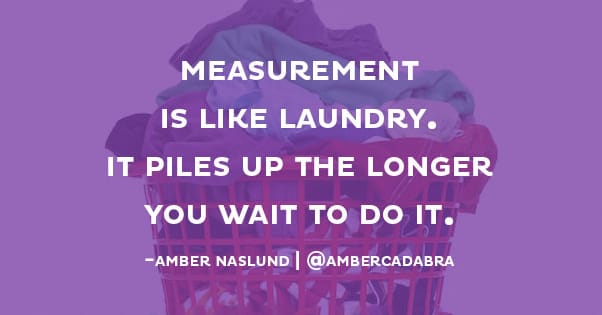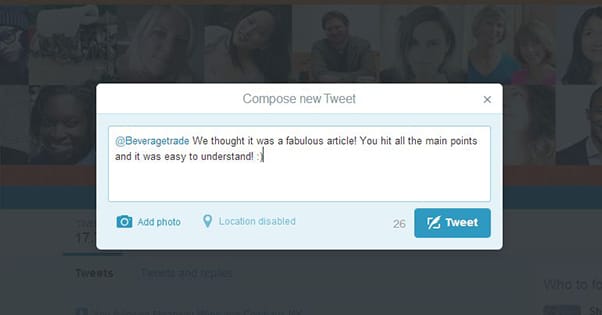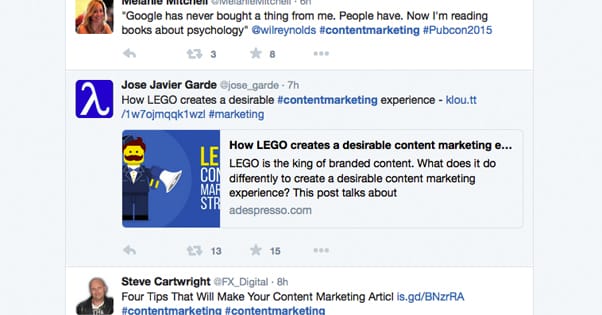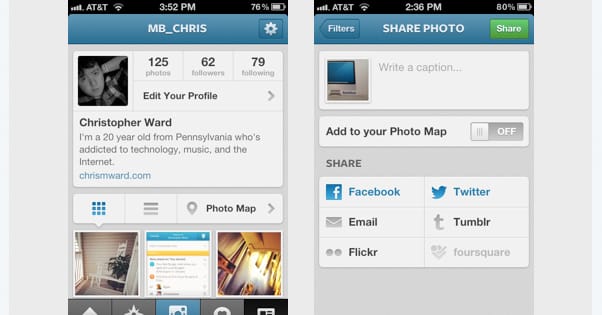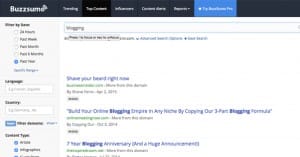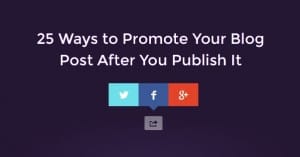35 Advanced Methods to Promote Content on Social Media
Published by Kenny Novak • Content Marketing • Posted October 8, 2015 ContentPowered.com
ContentPowered.com
One of the things we marketers say consistently is that the route to success online these days is through content. Write excellent content and the rewards are yours for the taking. People will find it, and find you, through organic search. You’ll gain social prominence. Your business will grow and you’ll rake in the profits.
The reality is, it’s a lot harder than that. So many people are creating so much content that it’s impossible to keep up with it all. Tons of excellent blog posts languish with no attention simply due to the crush of information on all sides. Even Facebook has to filter excessively; they claim the average user would see five times as many posts if they didn’t filter out most of the content posted on the site.
These days, creating awesome content is the absolute bare minimum you can do; anything less is shooting yourself in the foot. What you really need to do to succeed is promote that content, and I mean a lot more than just posting it on your social media accounts and calling it a day. You need top-tier promotion methods, and that’s what I aim to provide here and now.
1. Ask Experts for Quotations
Every industry has experts, and experts love to promote themselves in various ways. One such way you can utilize for promotion is to ask an influencer for their opinion on your new content. You get a high quality recommendation and they get a bit more reputation. Try to hit up a bunch of influencers, because not all of them will respond to your request for a comment.
Each time you post your link on a social network, you have the chance to write a post to go along with it. These posts should vary each time you share one link, and each time you share a different link. Avoid using the same old formula every time. Experiment with comedy, factual quotes, clickbait quips and other variations. Measure what works best.
3. Mention or Tag Sources
Every article relies on data from some source or another. If you’re using outside sources, you’re linking to them in your content almost every time. When you link to those sources and publish the post, gain exposure by mentioning those sources in your social posts. You can tag them on Facebook or @mention them on Twitter, but try to only do one or the other. Pick the platform that source uses the most.
4. Contact Sources Directly
This is an extension of the previous method, and it works best for sources that are occasionally active on social media but are more active in their own spheres. Instead of mentioning them publicly – or in addition to – send them an email. The direct communication has a higher chance of getting their attention than a message through a barely-used social platform.
Use a social listening tools or social searches to scan Twitter for users – preferably users with a sizable audience – who are talking about the topic you covered in the post you’re trying to promote. Do a quick audit of those people to make sure they’re people you’re willing to associate with publicly, and if they pass muster, send them a direct message asking for a comment or promotion of your post. You might be surprised at the influence you can get from people you’ve never heard of before.
6. Pin a Great New Post on Facebook
Both Facebook and Twitter allow you to pin a post to the top of your feed, so anyone coming in to the home of your profile gets to see it above all else, even if EdgeRank or chronology would indicate otherwise. You should always have something valuable pinned when you’re promoting it, though you don’t necessarily want to rotate it every time you publish a new piece of content. Essentially; use this technique sparingly, so it remains potent for when you do use it.
7. Link Your Content via Image on Facebook
Facebook is a visual platform, and it makes sense to customize the image preview of the links you share. Another method to get more real estate, though, is to make the content a photo post. Publish a compelling photo and include the link in the description. It’s not quite as optimized for being a link, but an image gets more screen real estate and has different EdgeRank ratings than a link post, so it can be good to vary things up occasionally.
8. Post the Content Several Times
Each piece of content you create can be posted several times on each social network you use. Different networks have different ideal frequencies, so learn them and get used to them. In general, Twitter will allow you to post several times per day throughout several weeks, while Facebook will only support three or four posts of the same content over the course of a month, and Google+ doesn’t need more than one.
Each time you’re posting your content, it should have relevant hashtags attached. The trick is to keep one consistent with branding, but vary the others to hit different ongoing conversations and different topics, with different groups of users. This greatly adds to your exposure, and helps you determine what communities are most interested in your site.
10. Link Your New Content in Highly Viral Old Posts
Social promotion doesn’t have to be direct. One interesting trick you can use is identifying the content you have that is still the most shared and viewed on social media. Add the link to your new content into the older, viewed content. Now when new users view the highly popular content, they see a link to your newer content and can view it as well.
11. Post Your Content on Instagram
Surprisingly few people think to post their promotional content on Instagram, and it’s easy to see why. In a heavily image-focused site, it’s difficult to promote anything more than a contest. However, if you can create some interesting graphics to go along with your post, you can get a reasonable amount of traction on the mobile-emphasized social site.
12. Respond to Comments on Social Media
This one really shouldn’t be on an advanced techniques list, but I have to include it simply because so few businesses actually follow this advice and do it. Comments are the social aspect of social networks, and you absolutely need to hold conversations if you want to seem personable and build your reputation.
This is a tricky tip because you can’t just join a group and dump your link. You need to be an active participant in the group beforehand, so people know you and trust you, before you start promoting yourself. Thankfully, once you’re part of a group, it remains open to you as long as you remain active in it.
14. Send the Link to Roundup Bloggers
Virtually every niche has a handful of bloggers who make a running series of roundup posts, compiling the best content to be published in a given week or month. You’ll never make the list if you’re not in the awareness of the blogger, so send that blogger a link. You can use either one of the influencer methods posted up above, i.e. through social mentions or direct emails.
15. Convert the Content into a Compelling Video
This and the following few tips are all about repurposing blog posts as different forms of content to reach other networks of users, or to gain a second wave of traffic after the first has died down. By making your content into a video, you gain access to YouTube, which is positively massive. If you’re consistent about producing videos, you can gain a significant presence on the video hosting site.
Slideshare is essentially an online host for PowerPoint presentations, slide by slide. Formatting your content in slide form should be easy; it’s mostly paring it down. Include links to the expanded blog post to read more, and make sure your transcript is formatted properly. I’ve seen too many presentations where the transcript is just copied and pasted with no formatting and it turns into an unintelligible mess of text.
17. Convert the Content into a Podcast
Podcasts can be used in a few ways. For one thing, you can do a 1:1 transcript of your blog post into a podcast, which can be promoted on your site and through sites like Tindeck or iTunes. You can also use the script as the basis for a discussion with an influencer via Skype, which makes for an excellent expanded piece of content and gives you access to that influencer’s audience as well as your own.
18. Convert the Content into an Infographic
The internet is a very graphical place. Infographics are still a potent method of gaining traffic, and they give you access to a range of infographic curator blogs and aggregator sites. On top of that, you can circulate an infographic like it’s a new post on social media, and you can link to the original blog post in the article that accompanies the infographic.
19. Convert the Content into a Webinar
Webinars aren’t really great for social media presence. What they’re great for is establishing your authority within your niche. You wouldn’t be hosting a webinar to teach a subject if you weren’t an authority on the subject, would you? You get a lot of smaller businesses looking up to you, and they’ll be willing to promote your content in the future.
20. Expand the Content into an eBook
Content with sufficient detail and depth of information can be expanded into an ebook. This makes all of the promotion of the original article into hype for the ebook. You can contact everyone who liked the original post and inform them of the coming book, which you can sell or give away in exchange for email opt-ins.
21. Act Like You’re Revealing Secrets
This one is all about the attitude. If you present your post in such a way that it sounds like you’re revealing closely kept industry secrets, you can get a lot of attention from people who are on the fringes of the industry and need those secrets to succeed. This works even if the secrets aren’t really secret at all.
22. Create Your Own Top Lists
Remember how I said every industry has roundup blogs? Why not take up that mantle yourself? Become a content aggregator and monitor your industry. Create weekly roundups of content that’s circulating the web that week. Make a separate section for your own content, so it doesn’t look like you’re just favoring yourself.
23. Mention Influencers on Google+
Google+ is an interesting social network, in that some of the most influential people online use it, but it has surprisingly low adoption from the general population. It also doesn’t like repeated posts, so it’s best to only post a piece of content once. When you post it, mention influencers whom you think would be interested. It’s more likely to get their attention than a mention on Twitter or Facebook.
24. Post in Select Subreddits
Reddit is very fickle with what it considers advertising or promotion, so be careful when you do this. What you should do is identify relevant subreddits that could enjoy your post topic, and post the article with a detailed title and description. Try to be a Reddit participant, though, or else you’ll find yourself hindered by a marketer’s reputation.
25. Pay for Additional Social Exposure
This one is always an option. Paying for exposure to content can be a good way to get a lot of traffic, but you should make sure you have a clear call to action and a way to monetize your traffic. Facebook ads, Twitter ads, StumbleUpon paid discover, even Reddit ads are all viable if you have something to do with that incoming traffic.
26. Attach an Image and Post to Imgur
Imgur is an image host with a Reddit-like voting system and a lot of traffic. Top-tier posts on the front page can get a ton of traffic. Using a compelling image – or your infographic, if you made one earlier – can get you a lot of exposure. Or it might not; you never know with the fickle platform.
27. Add Your Content to Themed Pinterest Boards
Pinterest is another great place to put the images you create for your content. Post a few different options in your post for users to choose from when they pin, and use their script to allow one-click pinning.
28. Talk Cross-Promotion with People on Par with You
You don’t always need to target influencers with your outreach. You can often find businesses in the same situation as you, and strike up a deal for some mutual promotion. Now, don’t refer to it as link sharing or anything that Google might call black hat, just promote each other.
29. Identify Similar Broken Links and Notify Site Owners
This technique is essentially just broken link building with a slant towards social media. You can combine the concepts of broken link building with outreach towards people who have shared content like yours in the past, and kill two birds with one stone.
30. Use a Related Posts Service like Outbrain
This is similar to an earlier step, where you link to your new content from your popular old content. The difference is, Outbrain allows your links to show up alongside popular content from around the web. It is, of course, a paid service, so make sure you can monetize the traffic if possible.
31. Submit to Popular Content Curators
Curators and aggregators abound online, and it’s particularly effective in the social spheres to submit your content for curation. Typical advice is to pepper your posts in alongside a stream of content you like and that fits your themes. Your goal here is to make your content what other people share as filler.
32. Promote via Cover Photos
This is a good technique to promote your most pushed pieces of content. Change your cover photos on Facebook and Twitter to point at a link to the post in question, usually in a pinned post. It’s like your own personal free billboard.
33. Use Social Listening to Use the Link to Respond to Topics
Your post is very likely relevant as a response or an answer to certain questions and discussions. Keep an eye out on the web for people discussing that subject, then drop into the conversation to supply your link. Try to do this only when it’s plausible that you came across it naturally, otherwise you might look like a creepy stalker.
34. Experiment with Variations on the Post Title
Every time you publish your post you can tweak the title on the social network you’re using. You can test variations on the title to see which works best. Try serious, try factual, try clickbait, and review the data later.
35. Create a Positive Feedback Loop
When a post is doing well, why not post about how well it’s doing? It’s a simple form of meta-promotion that gets another link to your content out there, but doesn’t look like just more promotion. Give it a try.
